I recently returned from a trip to Milan, Italy, and I spent most of the day at Sforza Castle. The castle dates from the 15th century and is named after its builder Francesco Sforza, who was the Duke of Milan. It is located in the city centre, and in addition to the historical castle building, the building itself doubles as a museum and art gallery. This museum is also special because it includes some work by sculptor Michelangelo, including the last sculpture by the artist, which has not be finished. The castle museums contain prehistoric rooms, Egyptian rooms (closed currently), art/sculpture galleries, modern art/furniture gallery, musical instruments, and china/glassware. There is also a current agumented reality game taking place at the castle where you can become a medieval fighter/archer and defend the castle, and this takes you to part of the castle and the upper walls and towers, which are normally off-limits. I did this activity, and it was really fun as it was a game along with a look at the castle as it was historically.
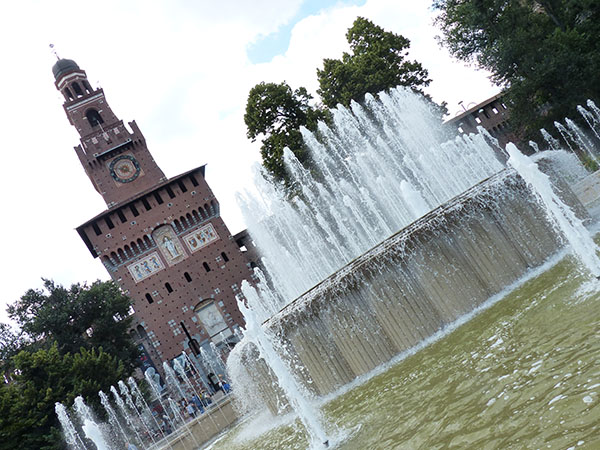
Although the current version of the castle dates to the mid-1400s, the first castle on the site was built a little over a century before. In the re-designed castle dating from the 15th century, a number of artists worked on the rooms. One of these was Leonardo ds Vinci, whose work is famous in Milan and throughout the world. He made frescos for several of the rooms and worked in collaboration with Bernardino Zenale and Bernardino Butinone, two names who came up in the castle often. The Sala delle Asse was one of the rooms that Leonardo da Vinci worked on. The castle was captured by the Spanish, and re-decorations during this period and bombing during World War 2 had damaged the castle.
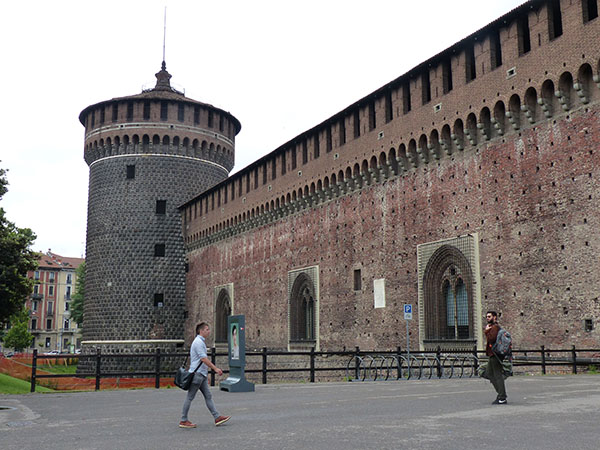
The castle has two inner courtyards, and the first one contains the small room with the work by Michelangelo. This is a not-to-miss exhibition as it includes the last sculpture by the artist.

The sculpture is located in the centre of the room, and he worked on this piece for at least a decade. It is called Pieta. The sculptor tried different solutions and had re-worked the figures. It shows Madonna carrying the dead body of Jesus. A modern example of this artwork has been created by New York artist Barry X Ball, and this can be seen in the art galleries in the main part of the castle.
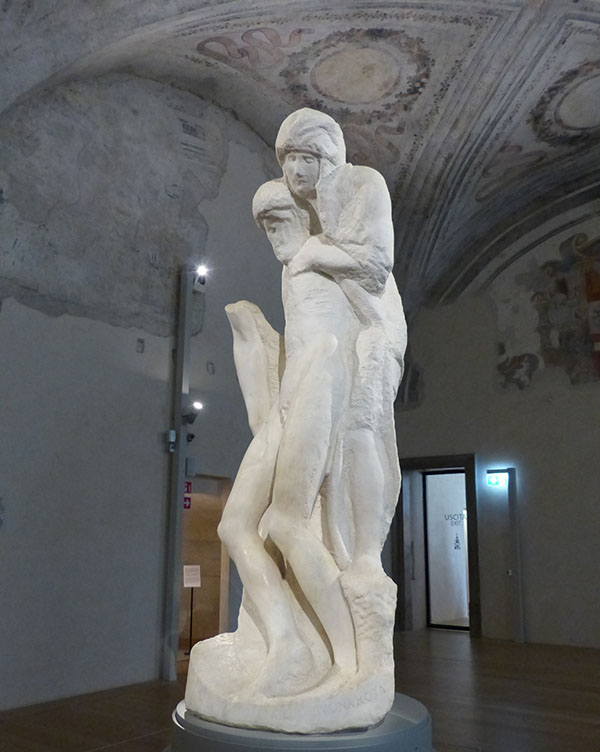

This coin was in the room of Michelangelo's work as well as a sculptued head of the sculptor. The coin below is a new casting of a replica given to Michelangelo.
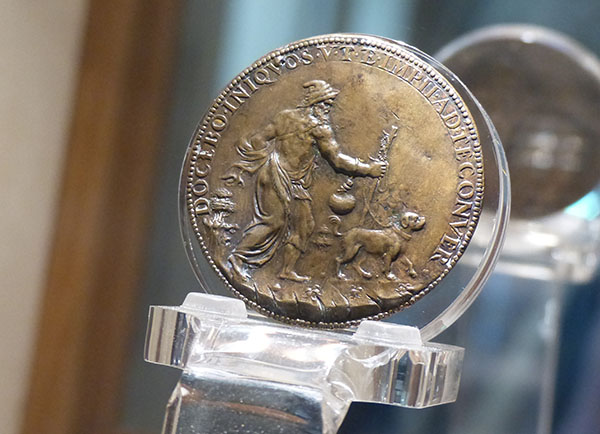
The funerary altar below was also the work of Michelangelo.
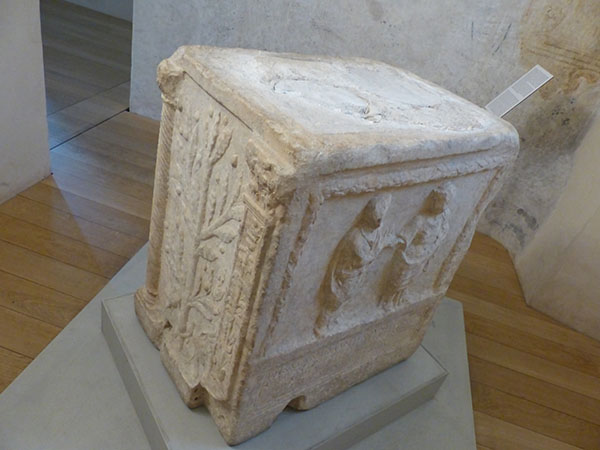
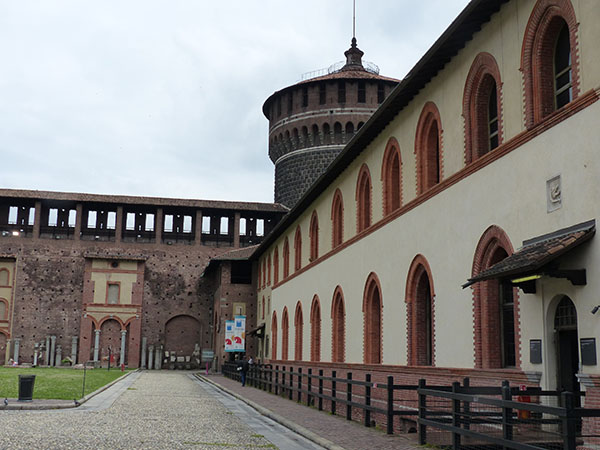
Progressing in, many used cannon balls can be seen in the moat. It is also thought that Leonardo da Vinci oversaw the construction of part of the castle and was greatly involved in it throughout.
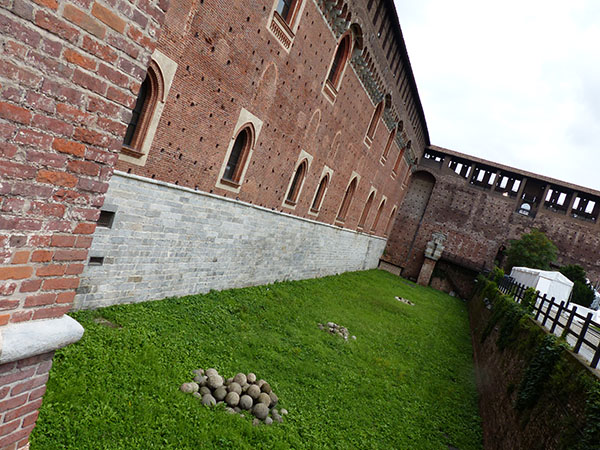
The archeology museum is located in the first part of the castle after purchasing tickets, and contains many items gathered from churches that have been demolished.
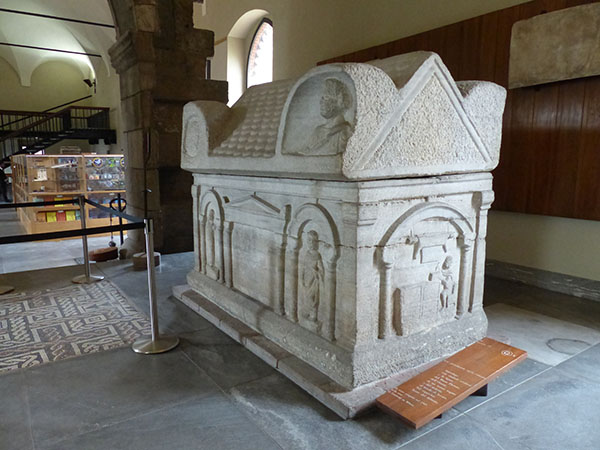
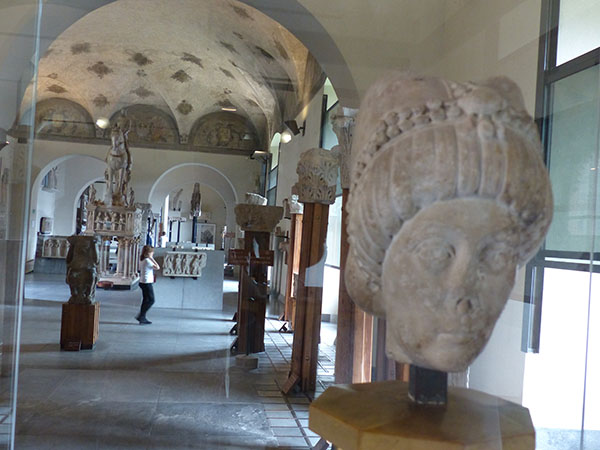
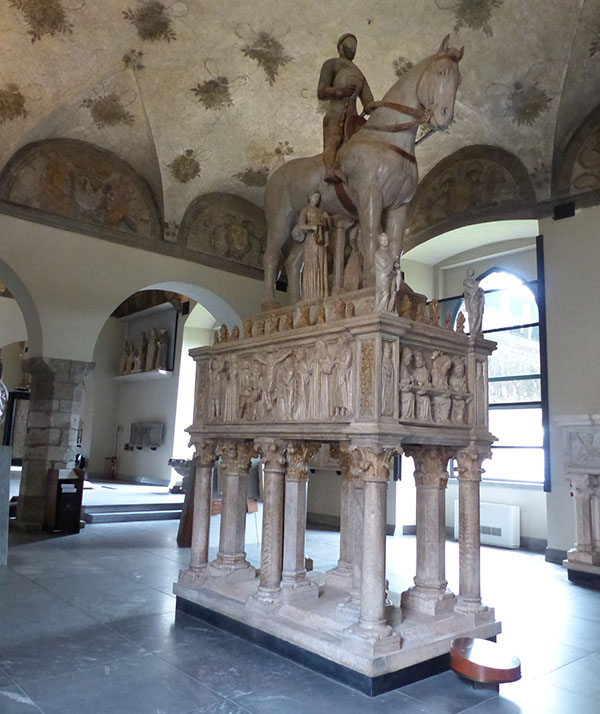
After this area, the exhibit continued and blended into the art exhibits along the side of the building and under the Leonardo da Vinci room. The celings and walls of these rooms are decorarated beautifully and some of them are currently being taken care of.

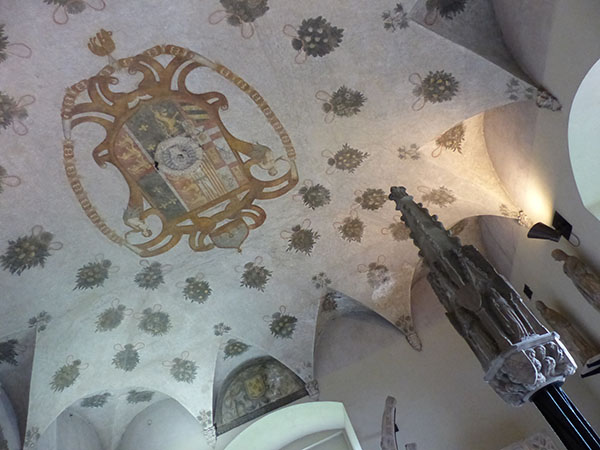
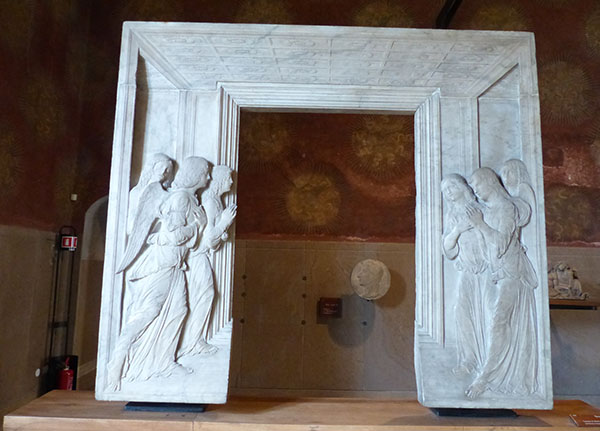
One of the items in one of the rooms is a painting by Leonardo da Vinci. The back of the canvas is exposed so that visitors can see his signature.
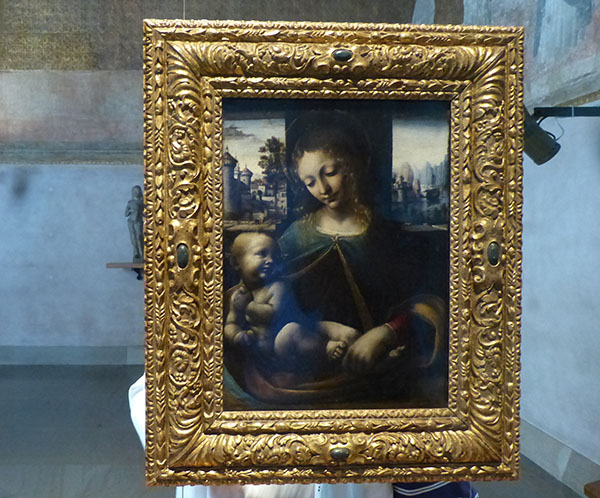
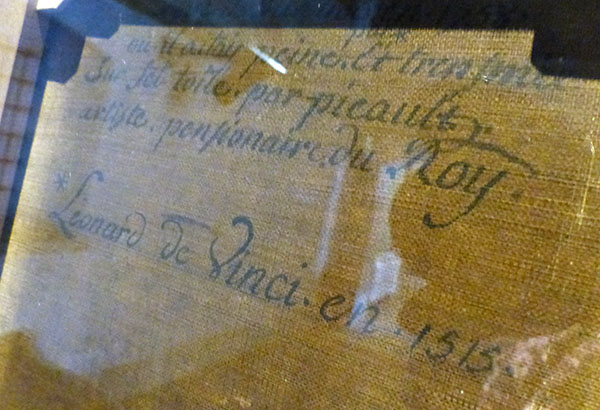
Some beautiful stained glass shines between the inner courtyards between the corridor-like rooms of this wing of the museum. Several of the galleries, particularly on the upper floor, had mainly religious art. There were so many different interpretations of the Madonna and baby.
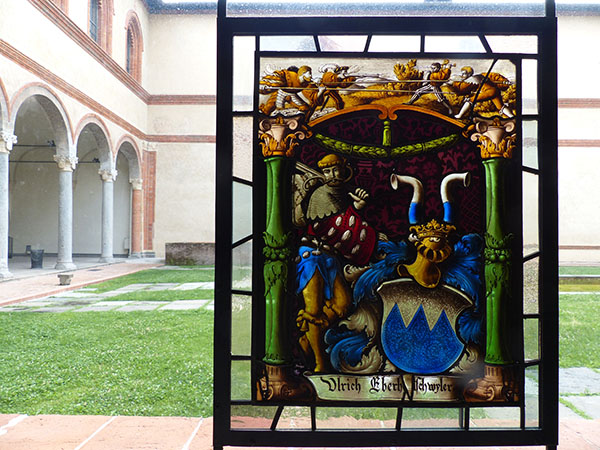
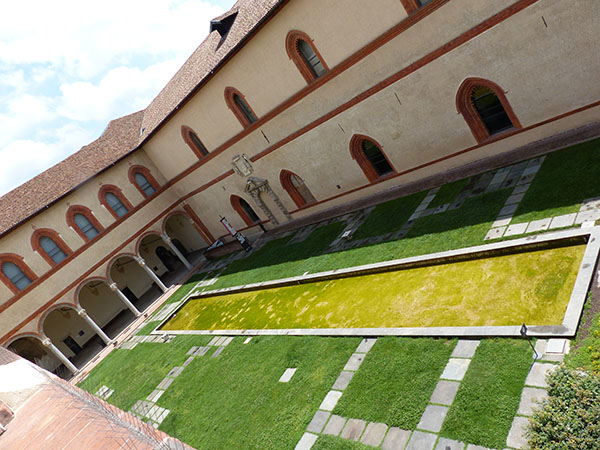
Another room had different furniture; some of it was older, and some of it was very modern.
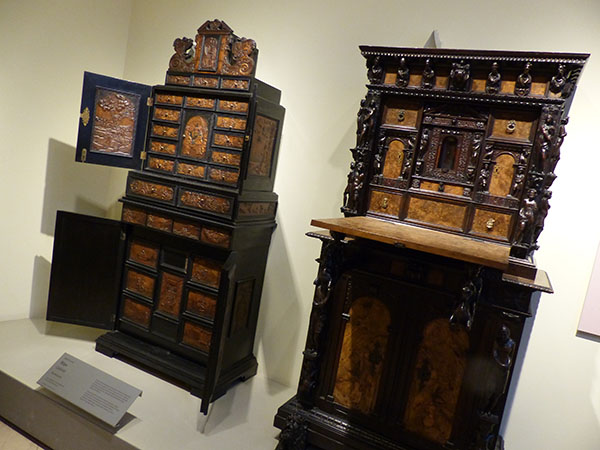
One of the most unique items in one of the rooms off the galleries is this devil. It was created with a torso that was probably from a church dating from the 16th century. It had a clockwork head attached and could stick out its tongue, move eyes and mouth and make a sound. It also used to have horns, but these are most. This would have creeped me out if I was a child.
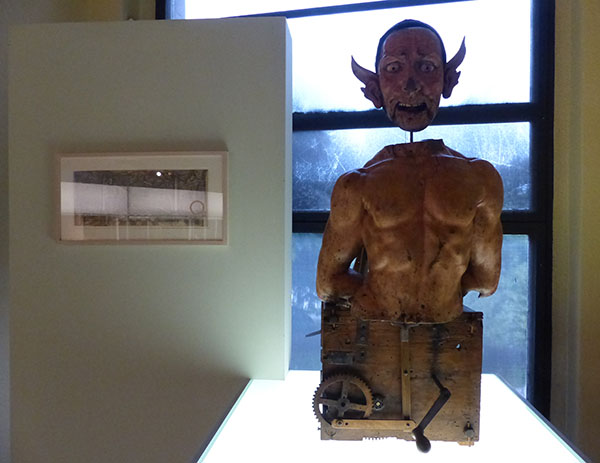
This room also contains some interesting items, such as the little boats and globes.
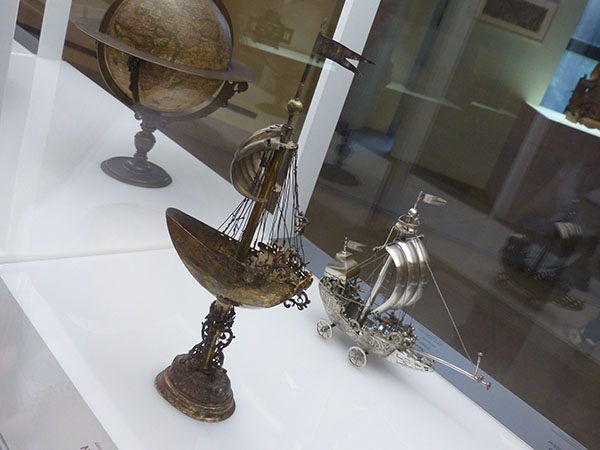

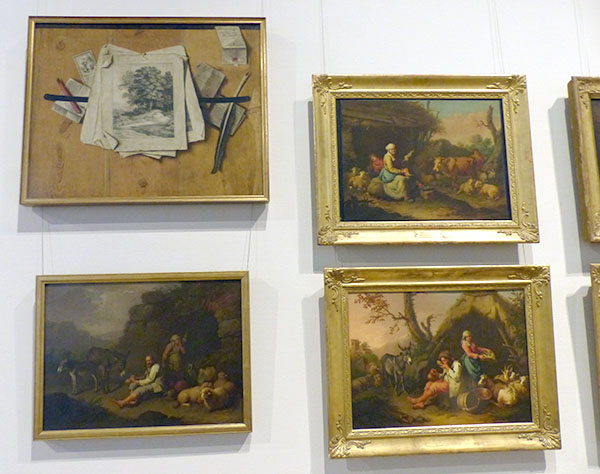
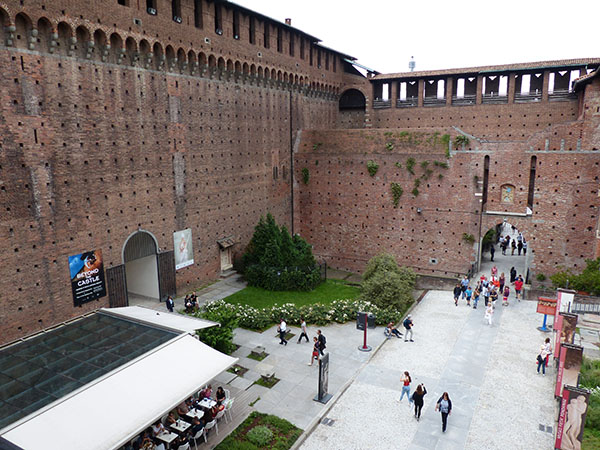
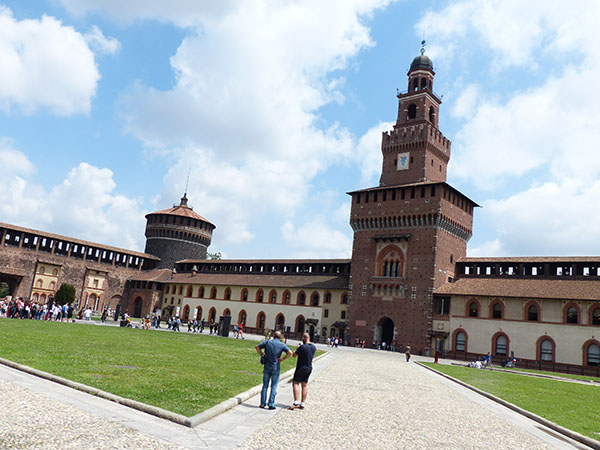
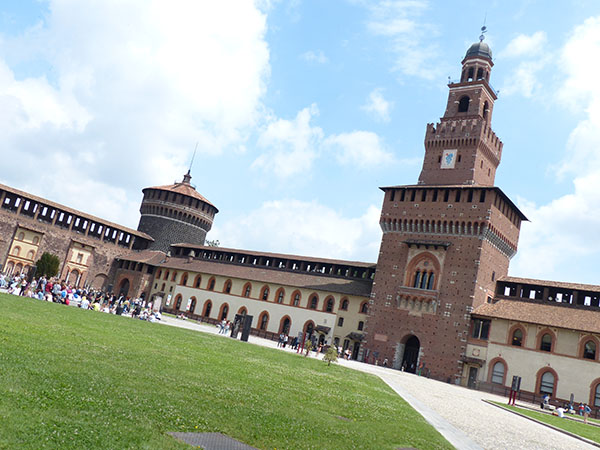
After having the look around and getting lunch, we booked into the agumented reality "Beyond the Castle" to defend the castle! This included a trip to the top of the castle walls and a short history lesson by our knowledgeable guide. Using the headset, we could see what the castle looked like in old times and we could defend the castle using a bow and arrow, which was really fun, and another weapon. The other weapon was a hand-held cannon (pre-gun) and I could not quite get the hang of this one. The arrow was more fun. We had to shoot moving targets (the enemy) and this got tallied up against the other competitors.
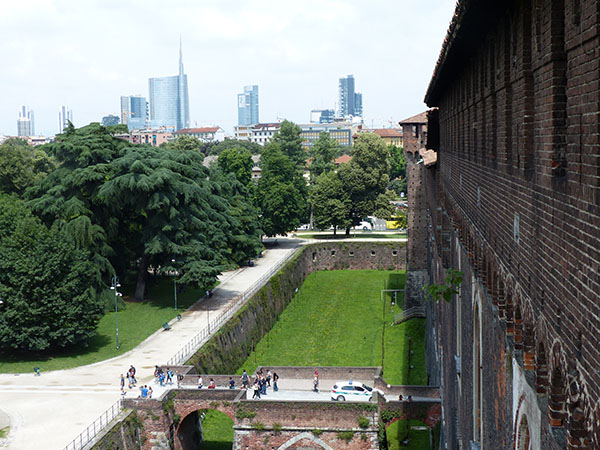
Our guide showed us the Milan skyline from the top of the walls and went over the buildings. The tallest building in Milan is located in the above photograph, and this is the financial area of the city.
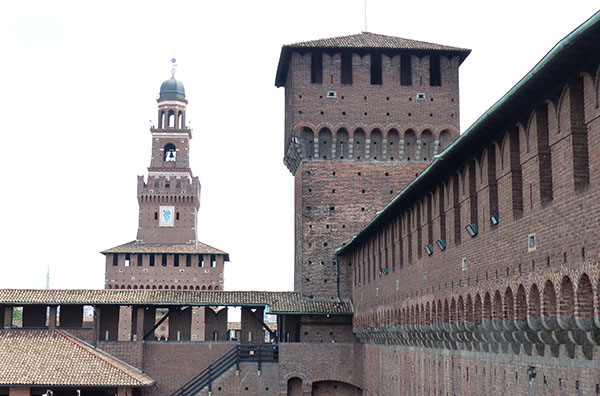
We could also see the Arc of Peace (Porta Sempione), which looks like Paris's Arc of Triump. This marks the location of the old city gate where the Roman walls surrounded the old city. The arc started construction when Napoleon controlled the city, and then the Austrians took over the city. The arc was finished later and has an inscription mentioning Napoleon.
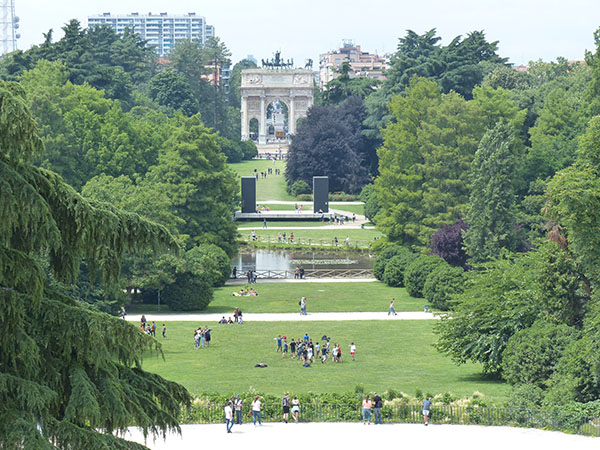
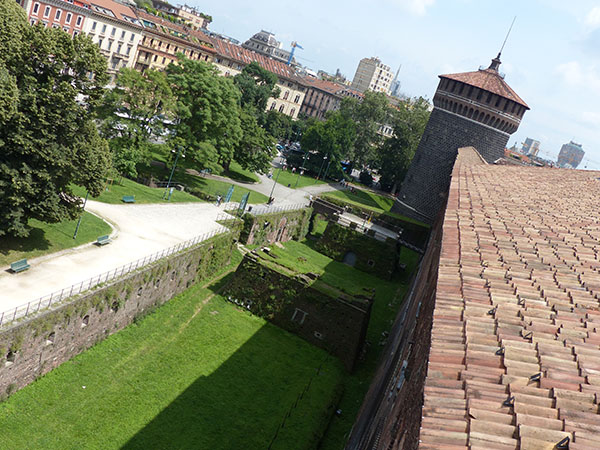
The arched walls on the castle are unique and apparently only a couple of castles have them. I cannot remember exactly what the guide said about them other than the design is unique.

After visiting the "Beyond the Walls" and winning the game by killing more enemies storming the castle, I had a quick walk around the prehistoric collections. The Egyptian rooms are nearby, but these are currently closed.
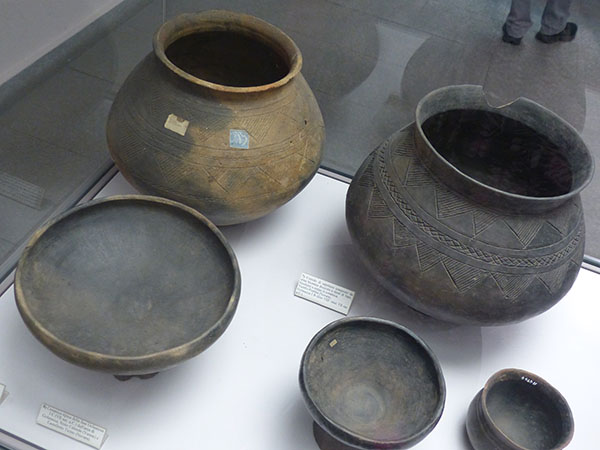
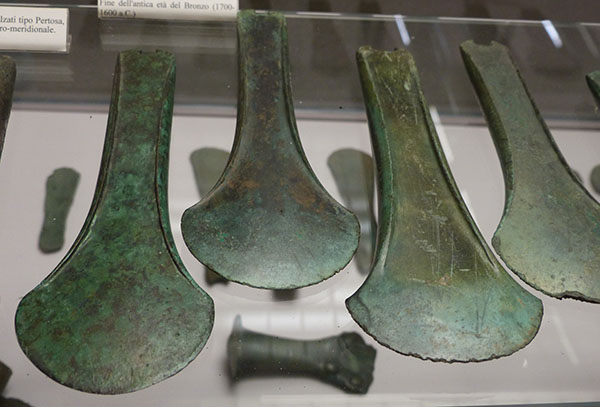
Before leaving the castle, a walk along and outside the walls was in order.
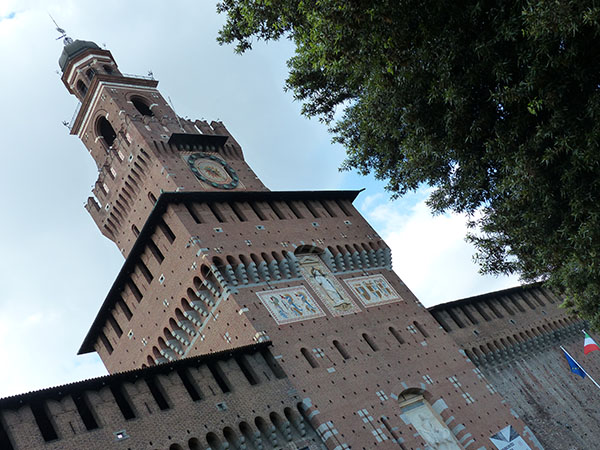
The castle has the city's emblem of a snake-dragon, although the one on the tower pictured below is damaged. This symbol is also used by other brands, such as car brand Alfa Romeo.
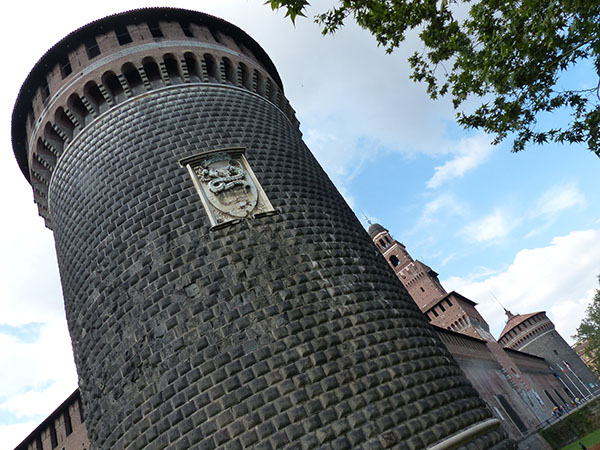
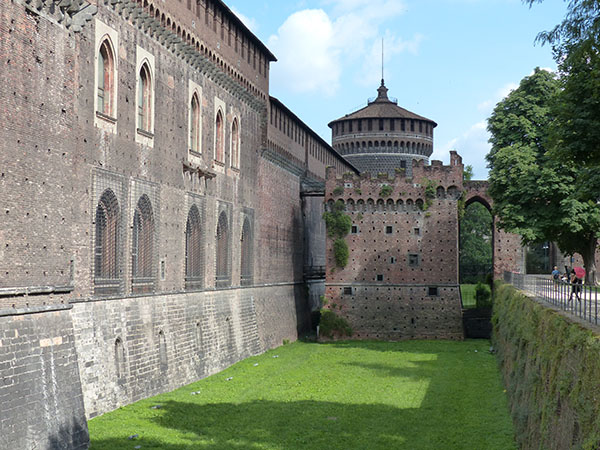
That concludes the visit to the castle. If visiting Sforza Castle in Milan, I suggest to plan over half a day at the castle because there is so much to see and a lot to read. Also, there are so many museums in the castle, and there is so much to see so just plan ahead to see the bits that you want to visit. However, it is difficult to leave the "flow" in places as the rooms just join one after the other, and they all flow together. Make sure not to miss the Michelangelo room, and I'd suggest seeing some of the art. I'm not into musical instruments, glassware/ceramic but did go through those rooms but they did not really interest me. I also got a little tired of the religious art and interpretations of Madonna and Child, but religious artwork isn't my interest. However, there are some fantastic pieces by artists so these need to be seen. Also, there is a cafe inside the inner courtyard, and the food here is decent enough. You will need it as there's so much to see and a lot of walking that sitting down is required during the visit.

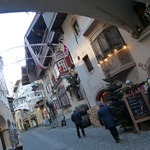
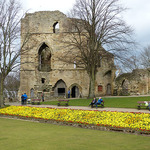
Leave a comment